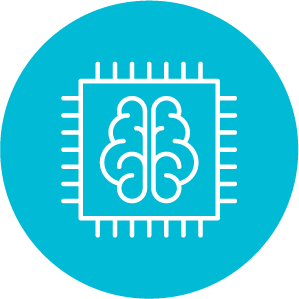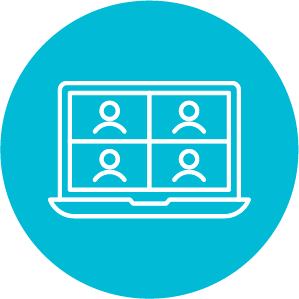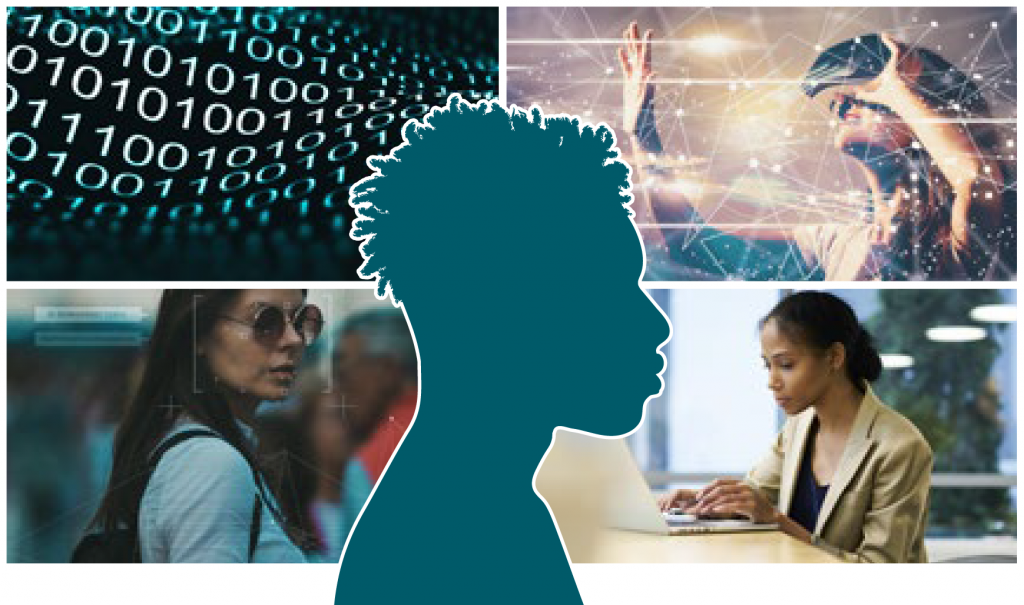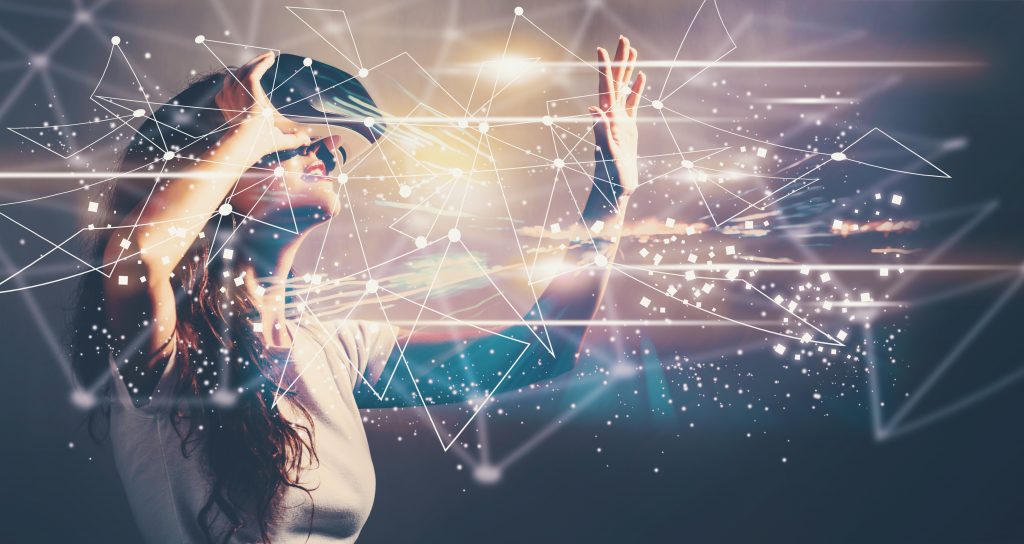Exploring Change in Social Connection

Exploring Change in Social Connection: What changes could shape our capacities, opportunities, and motivation for social connection in the future?
On this page
Foreword
Humans are fundamentally social creatures. Our relationships and social connections are so important to our identity, our health, and our ability to live and work together. Yet so often, the existence and resilience of social connection is taken for granted. Disruptions to the types and qualities of relationships we maintain could affect every aspect of our daily lives.
For many people, the COVID-19 pandemic highlighted just how important our connections are in life—not just to humans, but to pets, the land, and computers and other machines as well. New circumstances and norms altered relationships, and how and with whom we connect. It changed why we keep our relationships in the first place. Physical distancing imperatives and stay-at-home orders gave us the opportunity to reflect on the significance of the social connections in our lives, by demonstrating first-hand the unexpected consequences of their disruption.
Guided by the organization’s mandate, Policy Horizons Canada (Policy Horizons) identified sources of change that could fundamentally affect our capacities, opportunities, and motivations for connecting to one another. It builds on the work of our first social foresight report, Exploring Social Futures. We hope to spark thought and conversation about the future of social connection, and its impact not only on people, but also governments, business, and society at large. Our goal is to contribute to the development of policies and programs that are robust in the face of the changes ahead. We invite you to contact us and engage with us.
On behalf of Policy Horizons Canada, I would like to thank those who generously shared their time, knowledge, and thoughts with us.
We hope you will find this work insightful.
Kristel Van der Elst
Director General
Policy Horizons Canada
Executive summary
“What changes could shape our capacities, opportunities, and motivation for social connection in the future?”
Investigating this question is critical at a time when Canadian society (as well as societies around the world) faces two major issues: widespread feelings of loneliness, and a decline in feelings of trust in others and in institutions. These issues suggest that the stakes of this research are high. Understanding the changing nature of social connection may hold the keys to ensuring the long-term wellbeing of an aging population, and to safeguarding the health and integrity of the democratic institutions that form the backbone of our society.
Our research highlights four key areas of change that could fundamentally shift our social connections for society as a whole, and how they might shape the public policies of tomorrow.

Artificial emotional intelligence
Artificial intelligence (AI) systems are being taught to detect, recognize, and interpret human emotion and communication patterns. With these capabilities, AI could alter the nature of social connection by augmenting communication between humans, and shift the cultural significance of emotion and expression.

Real connection in virtual worlds
A growing number of people are making and maintaining relationships in virtual worlds and spaces, such as multiplayer video games, virtual and augmented reality, and video conferencing platforms. The lines between virtual and physical social lives could diminish further, resulting in new social realities, cultures, and experiences that meaningfully change the nature of our relationships.

Social surveillance
Technologies that watch and listen are everywhere, and the expectation that we could be under constant surveillance is becoming more common. We often use these tools to facilitate, organize, and optimize our social lives. As technology firms continue to optimize their products, surveillance becomes more prevalent in everyday life. The constant expectation that numerous systems are watching and analyzing our behaviour could affect who we spend time with, who we trust, what we say, how we navigate public and private spaces, how we see ourselves, and more.

Remote work
For many people, the relationships and connections they form and maintain at work are an important part of social life. Especially since the COVID-19 pandemic, the nature of work is changing, along with the type and quality of relationships people form on the job. Remote work may remain the norm for some, radically altering workers’ lifestyles as well as the form and function of the relationships they build, both locally and remotely.
Exploring change in social connection
How have your relationships or connections with others changed over the past 15 years, and what could they look like in the future? Shifts in how and why we form our relationships could affect our health, work, community, identity, and so much more, for generations to come.

Policy Horizons has been exploring changes to how we connect with each other, ourselves, and the world around us. We are seeing significant shifts that could alter everyday living for Canadians, and disrupt the work of policy makers. This report illustrates some of the most powerful areas of change in social connection, and explores what it could mean for Canadians in the future. What is social connection, and why is it so important to explore right now?
What is social connection?
What do we mean by social connection? The interpersonal ties that arise between people. That said, the focus on links between humans does not exclude ties to oneself, to the land and the environment, to pets, or even to AI assistants. These are also compelling areas of change, and help create a broader picture of what social connection looks like for Canadians.
We have many different relationships with the various people in our lives. How do we refer to these different ties? How can we organize the elements of our social lives to more clearly see what is changing? We have drawn from research on social capital and other disciplines to characterize the ties that may undergo change in the future.
We have social ties that:
- Bond people in the same social group
- Bridge between people in different groups
- Link people in social hierarchies and power structures
From a social capital perspective, these ties can deliver benefits like comfort, support, ideas, or power. In this way, a well-connected person is well supported. From a health perspective, these relationships can contribute to a subjective feeling of belonging, a highly personal metric that contributes to so many aspects of a happy life. We can also consider strong and weak ties with others. Strong ties are those we share with those who know us well, such as close family and friends. We might have weak ties with a regular customer at a store, a neighbour, or a fellow commuter. These too come together to affect one’s sense of trust and belonging.
How might drivers of change affect all these relationships?
This brings us to the central question behind our work:
What changes could shape our capacities, opportunities, and motivation for social connection in the future?
Why is it important to look at social connection?
Canadian society (among others) faces two major issues with strong links to social connection: widespread feelings of loneliness, and a decline in feelings of trust in others and in institutions. These issues have existed for some time, but were exacerbated by the COVID-19 pandemic, where physical distancing was a necessary but arduous act of public good.
Loneliness, a subjective feeling of unwelcome isolation, has become a key issue for governments in recent years. Since it is subjective, a person could have many social contacts but still feel lonely. Social isolation is a related but distinct concept that can be objectively measured according to the number of social contacts we have. Loneliness and social isolation are different measures but closely linked. They are recognized by researchers as urgent social issues, and some have compared their impact to an epidemic. They affect health and mortality, and erode the social capital that keeps society running productively.
A noted global decline in interpersonal and institutional trust is another driving concern behind this work. Trust enables society to flourish in a number of ways, and is essential to building resilience on the individual, household, community, and national levels. It is closely linked with rates of community participation, in a feedback loop that can flow positively or negatively. Yet research suggests that social connection is integral for building the trust needed to participate fully in society.
We are looking at changes to social connection because the potential impact is high. Loneliness and declining feelings of trust are widespread issues that, for many, lead to social disconnection, potentially weakening the fabric of Canadian society. As uncertainty clouds more of our vision of the future, a strong sense of social connection becomes key to societal resilience. What follows is a summary of the most compelling areas of change we have identified in social connection, and some thoughts as to where they could lead in the future.
Drivers of change
Artificial emotional intelligence

We are teaching AI systems to detect, recognize, and interpret human emotion and communication patterns. These capabilities could allow AI to alter the nature of social connection by augmenting communication between humans, and shift the cultural significance of emotion and expression.
What is changing?
- Emotion reading everywhere. AI that claims to detect emotions is becoming more widely accessible. A number of online services already offer AI-powered emotion recognition that users can freely test. The means to recognize emotions are even moving beyond reading facial expressions—using heart rate data embedded in wearables, eye tracking, and some remote technologies. Despite important criticism of its technical, ethical, and philosophical shortcomings, AI-powered emotion detection could ride a wave of popular and commercial excitement to greater ubiquity.
- Communication patterns decoded. An increasing body of knowledge in human emotions has led AI to better understand how humans communicate with each other. Today, a number of systems already rely on AI to mediate human-to-human communication. Grammarly, a popular writing assistance software, includes a feature that evaluates the emotional tone of a text, and gives tips for changing it. The CoParenter platform facilitates civil, productive dialogue between co-parents who could be prone to feuding, by suggesting alternative wording when a message is considered too terse. Researchers use AI emotion detection to optimize compassionate communication when doctors must deliver bad news to patients, and some schools use it to improve the quality of classroom discussion.
- New applications for emotion recognition. Businesses, services, and the arts are also exploring a wide range of uses for emotion recognition. In 2020, Spotify was granted a patent for technology that recommends music based on the listener’s speech patterns. Amazon was issued a patent that would enable Alexa, its AI assistant, to provide tailored responses based on the user’s perceived mood. In Spain, a live comedy show uses facial analysis to charge audience members only for the number of times they laugh. The vehicle manufacturer Hyundai has experimented with emotion recognition technology that adjusts the in-car climate according to passenger mood. And some video game creators are exploring the idea of future video games adapting and reacting to player emotions.
- Personality detection. In some cases, AI models are reaching beyond the moment-to-moment detection of emotion, claiming to spot personality traits based on voice and expression data. HireVue AI is a current-day technology that rates an applicant’s “employability” based on recorded responses to interview questions. The recognition of personality traits and capacities for human connection are driving businesses, and the ability to identify traits like empathy or narcissism could be useful.
Where could this go?
- Human relationship mediation and facilitation. Emotion recognition and a better understanding of human communication could enable AI to play an intermediary role in human relationships. It could function like an extra social brain, detecting social cues such as micro-expressions that a human might otherwise miss, and advise on more effective communication. It could give advice such as: “Ask them how they feel about it,” “Perhaps you have been talking too long,” or “Your blood pressure is rising, may I suggest you find a way to end the conversation?” This could reduce misunderstandings and miscommunications, and benefit neurodiverse populations who might welcome an extra tool for processing social cues. It could also improve collaboration in a work context.
- Potential for social skills atrophy. By outsourcing the recognition of emotions and social cues in ourselves and others, social skills could decline across society. Some people could become dependent on social mediation technologies, to the point that they become unable to make or maintain connections without a technological crutch. The same could apply to our awareness of our own emotional states, leaving users vulnerable to mental health decline if the technology became unavailable. Generations that grow up using these tools could fail to develop certain social skills at all.
- Incentives for mood-altering tools. With the knowledge that other people and systems could respond to us based on our mood, some may seek more control over the emotions they display. Known tactics could emerge for masking or faking emotions to manipulate AI. For instance, over-smiling during a job interview may be unsettling to a human, but might convince an AI that the subject is highly agreeable. Further, people could turn to meditation, drugs, or technological means of “hacking” their emotions to elicit desired responses. If these practices became widespread, trust in the authenticity and significance of emotion could decline.
- Opportunities to create cultural bridging ties, and the risk of alienation. The meaning and significance of gestures, tone, and words vary between human cultures. A gesture like nodding the head, for example, signals different things to different people, and some speaking tones could register as calm to some, and angry to others. An AI communication platform that is culturally knowledgeable and nuanced could help some groups overcome apprehension towards out-group members. It could also offer new opportunities and capacities for interactions between social groups. Alternatively, groups whose communication cultures are not recognized in such a system could feel alienated, and could be further marginalized due to this lack of recognition.
- Hard numbers on soft qualities. If the economy of the future prizes certain personality traits and talents, AI could quantify and validate those qualities in people. By using AI, companies could claim to recognize traits like empathy, organization, and the ability to work with others. These personality certifications could be used as criteria for connecting with others. Some could wear their favourable certifications with pride or seek to obscure those that make them look bad.
Real connection in virtual worlds

A growing number of people make and maintain relationships in virtual worlds and spaces, such as multiplayer video games, virtual and augmented reality, and video conferencing platforms. These technologies are evolving quickly, driven by enthusiasm for their potential to connect people in new ways. In the future, the lines between virtual and physical social lives could diminish further, resulting in new social realities, cultures, and experiences that meaningfully change the nature of our relationships.
What is changing?
- Gaming is growing. Video games were once played by a limited audience. Today, the number of people who play and create games is rapidly expanding, as are the economic and cultural significance of the medium. Gaming has been called one of the most important aspects of youth culture. Older generations are gaming more, and women and girls represent a growing proportion of gamers. Developers and players come from a variety of ethnic and geographic backgrounds, and for many, games are an opportunity to express and experience new perspectives.
- The metaverse is coming. Developers are racing to bring about the next phase of social gaming: the metaverse. In this persistent, populated online world, users become virtual avatars and exist together in a fully realized virtual environment. Developers liken it to walking inside the Internet itself. This online space transcends the scope of a single game, activity, or platform, and is not owned by any single entity. Meta, among other companies, is already laying the groundwork for a future where the metaverse is central to social connection and online life. This metaverse vision imagines a connected, virtual space where users can act in creative ways to forge and maintain relationships with others.
- New ways to experience virtual connections. Emerging technologies are allowing for deeper experiences of virtual connection. These technologies aim to replicate aspects of in-person connection to make virtual social experiences more meaningful and authentic. For example, social virtual reality (VR) allows participants to inhabit virtual spaces while feeling a more acute sense of physical presence. Social VR games are becoming more popular, and festivals like Burning Man have incorporated VR elements into their planning and design. It has even allowed seniors to re-experience memories. Video conferencing platform developers are also experimenting with a variety of features to best capture that “in-person” feeling, and the demand for such features is high.
- Virtual rituals. Rituals are a fundamental way of expressing and experiencing social connection, and they are now happening virtually. The importance of physical distancing during the COVID-19 pandemic forced events like birthday parties, weddings, religious services, and family gatherings to be adapted to video conferencing platforms. As in-person gatherings resume, future rituals may continue to include a virtual component. Rituals are being created and re-created in video game worlds as well. Memory gardens constructed in Animal Crossing: New Horizons helped players express and cope with grief. Final Fantasy XIV players can enact a “Ceremony of Eternal Bonding,” a marriage between two player characters. World of Warcraft players gathered in a public area as a form of protest.
Where could this go?
- Further blurring between physical and digital worlds. The popularity of a persistent metaverse could make the idea of a separation between digital and physical lives seem antiquated. Participants in virtual worlds could see their social lives as occurring across multiple overlapping layers of social connection. They might expect their identities and reputations to follow them from one world to another—or they could wish for a clean slate between them. The consequences of our actions in virtual worlds could carry over into the physical world and vice versa. This may challenge current models of privacy and libel laws, and economic assumptions under tax law.
- Codified norms of connection. The laws and rules encoded into virtual worlds could shape the norms of social connection in the future. Forms of connection that are marginal or stigmatized today could become more widely accepted if there is space for them in virtual social worlds. Conversely, if creators fail to build inclusivity into their worlds, marginalized groups could face further discrimination when connecting virtually. The authority to define and enable the new norms of connection could fall into the hands of a self-selected few. Developers of popular platforms and worlds could inherit even more social responsibility for inclusion and normsetting than they carry today.
- Proliferation of shared realities. Social connections and networks may influence some people to favour one version of reality over another. Certain individuals or groups may find greater fulfillment concentrating their social lives in only one world. Some could even abandon the possibility of a shared reality with non-participants, which may create barriers to understanding and communication between groups. These different worlds may become associated with different sets of values. Some of these value sets could bleed into the physical world—or other virtual ones—if the lines continue to blur.
Social surveillance

Technologies that watch and listen are everywhere, and the expectation that we could be under constant surveillance is becoming more common. We often use these tools to facilitate, organize, and optimize our social lives. As technology firms continue to optimize their products, surveillance becomes more prevalent in everyday life. The constant expectation that numerous systems are watching and analyzing our behaviour could affect who we spend time with, who we trust, what we say, how we navigate public and private spaces, how we see ourselves, and more.
What is changing?
- Surveillance in public and in private. Surveillance systems are an influential part of our everyday lives, yet they often go unnoticed. Systems that track our location, preferences, and behaviours permeate the public and private environments where we connect. Surveillance systems are in malls and stores, vehicles, schools, city streets, dormitories, and the very devices we use to connect. The number of these systems could increase as customer insights and profiles increasingly overlap with commercial interests. The improving sophistication of the algorithms behind surveillance tools means that individuals can be identified and speculated on more accurately.
- Democratization and gamification of surveillance. Surveillance methods are increasingly available to anyone for everyday use. Whether for security, convenience, or other reasons, surveillance is now mainstream. Conducting surveillance has become a normal part of social and community life, particularly when it comes to tracking ourselves and those closest to us. Camera doorbells and other sophisticated home security devices mean common spaces like sidewalks and parks are constantly monitored. License plate trackers that note the activity of residents, guests, and strangers also increasingly watch neighbourhood streets. In the future, the line between social platforms and surveillance services could erode further, making surveillance an explicitly social activity and capitalizing on its capacity for public spectacle.
- Surveillance at work. Employers are watching workers with greater scrutiny, spurred by technological advances and the shift to remote work. Before the COVID-19 pandemic, this happened in white-collar and blue-collar workplaces alike. The increase in remote work has brought surveillance tools into home offices as well, gathering data such as workstation activity, productivity, location, biometrics, and even mood. Where workers have less leverage, they can be subjected to invasive surveillance with little recourse. In combination with AI-driven management tools, these technologies could significantly change the way employers perceive and evaluate employees.
- Rating and reputation systems. Rating and reputation systems are becoming a popular way to learn of an individual’s virtues or flaws. In the western world, these systems are typically used to evaluate an individual’s professional competence, or make determinations about a community. The use of such systems in China demonstrates how a more expansive rating system can define an individual’s social identity and life prospects. Despite the convenience that a single trustworthiness score can offer, many of these systems can be flawed, unregulated, and easily manipulated.
Where could this go?
- Social performance. If data-centric reputations and ratings become an integral part of social life, people could make calculated choices concerning with whom they connect, what they express, how they present themselves, and where they do so. In certain contexts, people could strategically act out the values they want to be known for. This could inspire distrust in relationships, with some questioning the authenticity of their relationships, and the behaviour of those with whom they connect. People may curate their social reputation to reflect desirability or success.
- Degradation of context. We all carry multiple identities within us. The traits we exhibit and the ways we present ourselves could be different depending on whether we are with family, colleagues, friends, a congregation, or a sports team. Some behaviours and core identity markers are consistent across contexts, but many change—not as an indication of deceit, but rather a natural human tendency. It can also be a way for some members of marginalized communities, activists, and other vulnerable groups to protect themselves. Contextual integrity helps us trust that who we present ourselves as in one environment will not be misinterpreted or held against us in another. It is key for a sense of trust, and allows us to inhabit our multiple identities safely.
This very notion could be at risk if social surveillance becomes even more ubiquitous in the future. If more information flows between contexts due to unconstrained information sharing, it could lead to a general loss of trust, openness, and willingness to connect with others. People could lose the freedom to define their identity in each specific context, instead viewed as a combination of all their previous words, relationships, deeds, and experiences. - Social capital quantified. Social capital refers to all the benefits that come from affiliating with and knowing people. With more ubiquitous surveillance and platforms that define social reputations, aspects of social capital could become quantified, publicized, and tangible. This could include personal traits like trustworthiness and generosity towards strangers. The social value of certain personal qualities could change in response, with people seeking compensation for virtues that are traditionally under-rewarded, or being punished for irrelevant quirks or flaws. The subjective nature of some personal traits, like integrity, could fuel disagreement between users, or cause identity confusion.
- New notions of private and public. Ubiquitous surveillance could shift common assumptions and understandings about private and public information. Much like history has blunted or erased certain social taboos such as divorce, future social norms may depend on what information is publicly accessible. Joining a system that lets a user learn about an acquaintance’s reputation, for example, may require that user to disclose their relationship history. This could change what information we consider socially acceptable to disclose and discuss, and shift cultural notions of privacy altogether.
Remote work

For many people, the relationships and connections they form and maintain at work are an important part of social life. Especially since the COVID-19 pandemic, the nature of work is changing, and with it the type and quality of relationships people form while on the job. Remote work may remain the norm for some, radically altering workers’ lifestyles as well as the form and function of the relationships they build, both locally and remotely.
What is changing?
- A surge in remote work. For some workers, the COVID-19 pandemic instigated a broad and rapid shift to working outside of traditional workspaces—most often at home. Despite the slow reopening of traditional workspaces, remote work may remain for some of the jobs affected. The shift has prompted technological innovations for workers. Some workspaces have already migrated to video game worlds, and others are using mixed reality technologies. Video conferencing platforms are continually experimenting with features that mimic certain aspects of in-person gatherings, suggesting that workplaces may be migrating to platforms that facilitate human connection in unique ways.
- Blurring the lines between work and everything else. The shift to remote work made it more difficult to separate work from the rest of life. In some cases, this has come at the cost of time and energy for close personal connections, like family. Employees report working longer hours from home than they would have in traditional work environments. The disappearance of the daily commute may also affect the process of mentally transitioning between work, domestic and parenting duties, and leisure, blurring the spatial and temporal lines that once clearly divided professional from personal roles. The ease of remote work has even prompted attempts to merge work with vacations abroad. Finally, employers can also keep a closer watch on employees through workplace surveillance technology, now in people’s homes. This blending of work and leisure lives could disrupt the quality and quantity of time spent maintaining close social connections.
- Office relationships are no longer the same. Connections with colleagues have changed under remote work conditions. Office friendships, which boost productivity and overall happiness, may not flourish as easily with purely remote contact. Relationships that typically form within an in-person workplace often have lasting effects on the life course; for instance, one survey suggests one-third of Canadian employees are currently or have been romantically involved with a coworker. Beyond implications for one’s personal life, the nature of work may also be affected. Informal time with colleagues is largely scheduled and intentional, possibly diminishing any sense of spontaneity in the work context. And as the world slowly returns to office environments, hybrid work arrangements could create new social gaps within organizations.
- Demand for a culture shift. While remote work norms are still being established, employees and employers are finding ways to solidify a healthier, safer workplace culture, particularly for women and other vulnerable groups. Although opportunities for in-person workplace harassment may have decreased, remote work has created new circumstances in which harassment can occur, drawing calls to address workplace harassment with greater urgency. While remote work technologies can contribute to personal disconnection, organizations also increasingly seek to cultivate a culture where human skills like trust, empathy, and communication are more valued. In both of these cases, remote connection technologies like virtual and augmented reality show encouraging signs that they will support improvement. Finally, remote work has prompted even broader discussions on the structure and philosophy of work, suggesting that change may be approaching for Canadian workers.
Where could this go?
- Widened inequities between types of work. While working remotely has become an option for more workers than before, most jobs still require physical presence. This gap could worsen the many inequities between types of work, particularly those that favour high-income workers. The pandemic has created a new element of risk for in-person work. At the same time, remote workers could potentially benefit from employer-subsidized home office upgrades, and reduced costs associated with working outside the home, such as commuting. These factors could further widen the health and safety gap between remote and in-person workers. If nothing is done to compensate, it could lead to further class divides between those who have the option to work remotely and those who do not.
- Support for social connection. The widespread shift to remote work has already disrupted some important social experiences linked to in-person working. As the cost of missing these experiences becomes more clear, employers may be asked to support social connection opportunities. For example, younger workers may miss out on mentorship opportunities, or the valuable experience that accompanies immersion in a collective work environment. Complications emerge as generations of workers with office experience retire. As time goes on, knowledge of the value of workplace relationships and rituals could seep away, and new approaches to workplace connections better suited to a remote environment could take their place.
- Demand for a shared reality between colleagues. Remote workers may look to gaming, metaverse, and virtual reality to connect with colleagues in a more embodied way. Virtual work worlds, rather than physical offices, could become the new common space in which employees collaborate and socialize. This could unlock new potential for organizational culture development and team building, allowing workers to bond in new ways through shared virtual experiences, for example by constructing a building in Minecraft. These could help compensate for the missed social experiences of traditional offices and other physical workplaces. This approach could raise inclusivity concerns if not everyone can access the virtual workplace, or if workers are unable to present their virtual avatars in a way that reflects their identity.
Conclusion
The nature of social connection in Canadian society is changing. With the introduction of new artificial emotional intelligence tools, computer programs are being trained to recognize, interpret, and respond to human indicators of emotion. This creates the potential for new technological facilitators of human interaction. It also raises ethical questions about emotional surveillance and real-time emotional interventions at the workplace and other public spheres, and the potential erosion of emotional authenticity in digitally or AI-mediated communication. On the other hand, emotional technology may incentivize social authenticity. For instance, these technologies can promote more compassionate interactions between strangers on the Internet, or even between doctors and their patients, by making people more aware of how their words affect others. People are turning to rich video game worlds and the metaverse to form real, profound, and sometimes long-lasting social connections. Rich interactions that move seamlessly between online and in-person environments may one day make the separate digital and physical lives seem antiquated.
Meanwhile, social surveillance, including new forms of work surveillance that track an employee’s mood, location, and productivity, is increasingly integrated into rating and reputation systems. People typically present different sides of themselves to their families, friends, romantic partners, or employers, but inter-networked social platforms may make it increasingly difficult to customize a different image of themselves for each social context, as their families may see the same posts as their employers. Surveillance systems are also resurfacing questions about social control and the blurring of lines between private and public life. The shift to remote work is accelerating many of these trends, normalizing remote professional and personal interactions. Remote work is exacerbating inequalities between different employment classes, while changing the type and quality of relationships people are likely to form through their job.
The insights in this report suggest that people will form social connections in increasingly digital and remote ways. The mainstreaming of new tools, platforms, and ways of working may forever change how, why, and with whom people form social ties, with lasting effects on how they see themselves and the world around them.
Acknowledgements
This report synthesizes the thinking, ideas, and analysis of many contributors through research, interviews, conversations, and workshops.
The project team would like to thank the experts who generously shared their time and expertise in support of the research: Lundy Lewis, Cosmin Munteanu, Jamie Laidlaw, Andy Fisher, Gillian Sandstrom, Jeffrey Hall, Deirdre Kelly, John Verdon, Heather Tulloch, Megan Brady, as well as those who wish to remain anonymous.
Project team
Katherine Antal, Senior Foresight Analyst
Kurt Richardson, Foresight Analyst
Simon Robertson, Manager, Social Foresight
Kristel Van der Elst, Director General
Communications
Maryam Alam, Web designer
Laura Gauvreau, Manager, Communications
Géraldine Green, Editor (French version)
Alain Piquette, Graphic designer
Nadia Zwierzchowska, Editor (English version)
We would like to thank our colleagues Imran Arshad, Marcus Ballinger, Fannie Bigras-Lafrance, Alexis Conrad, Jennifer Lee, Darren McKee, Julie-Anne Turner, and Claire Woodside for their support on this project.
© His Majesty the King in Right of Canada, 2023
PDF: PH4-193/2023E-PDF
ISBN: 9780660478128
For information regarding reproduction rights:
https://horizons.service.canada.ca/en/contact-us/index.shtml